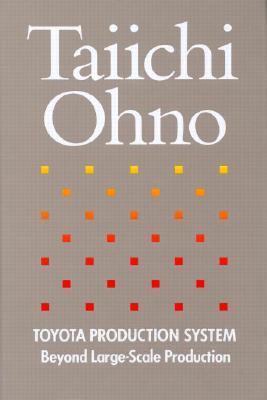What do you think?
Rate this book


152 pages, Hardcover
First published January 1, 1978
A proper work procedure, however, cannot be written from a desk. It must be tried and revised many times in the production plant. Furthermore, it must be a procedure that anyone can understand on sight.
1. Why did the machine stop?
There was an overload and the fuse below.
2. Why was there an overload?
The bearing was not sufficiently lubricated.
3. Why was it not lubricated sufficiently?
The lubrication pump was not pumping sufficiently.
4. Why was it not pumping sufficiently?
The shaft of the pump was worn and rattling.
5. Why was the shaft worn out?
There was no strainer attached and metal scrap got in.
By asking why five times and answering it each time, we can get to the real cause of the problem, which is often hidden behind more obvious symptoms.
... in America this system could not be implemented easily. It was possible in Japan because we lacked function-oriented unions like those in Europe and the United States.
Commodities purchased by customers are checked out through the cash register. Cards that carry information about the types and quantities of commodities bought are then forwarded to the purchasing department. Using this information, commodities taken are swiftly replaced by purchasing. These cards correspond to the withdrawal kanban in the Toyota production system. In the supermarket, the commodities displayed in the store correspond to the inventory at the production plant.
In the 1940s, Toyota’s die changes took two to three hours. As production leveling spread through the company in the 1950s, setup times went to less than one hour and as little as 15 minutes. By the late 1960s, it was down to a mere 3 minutes.
In summary, the need for quick die changes was generated and steps were taken to eliminate the adjustments - something never discussed in previous work manuals. To do this, everybody chipped in with ideas while workers were trained to shorten changeover times.
... the Corona and Carina flow alternatively. They do not run Coronas in the morning and Carinas in the afternoon.
The larger a business, the better reflexes it needs. If a small change in a plan must be accompanied by a brain command to make it work (for example, the production control department issuing order slips and plan changes sheets), the business will be unable to avoid burns or injuries and will lose great opportunities.
Introducing kanban without actually practicing these rules will bring neither the control expected of kanban nor the cost reduction. Thus, a half-hearted introduction of kanban brings a hundred harms and not a single gain. Anyone who recognizes the effectiveness of kanban as a production management tool for reducing cost must be determined to observe the rules and overcome all obstacles.